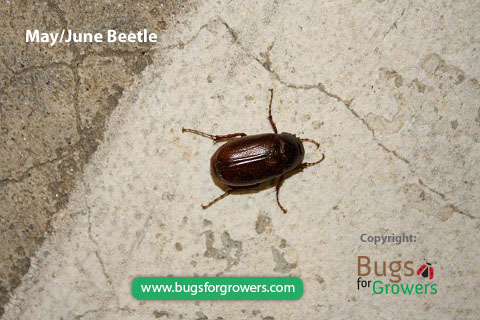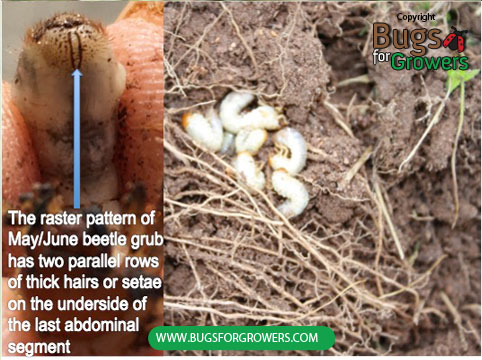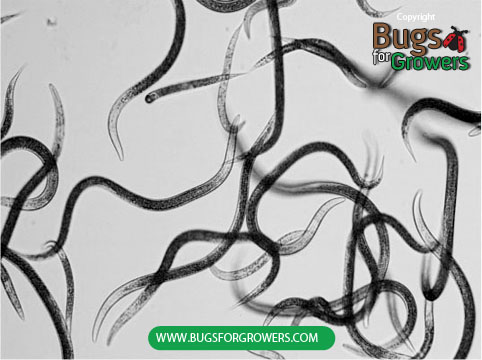Biological control
In order to stop the emergence of adults of May/June beetles (Phyllophaga spp.), their mature grubs and pupae have to be killed by application of either insecticides or beneficial entomopathogenic nematodes like Steinernema carpocapsae and Heterorhabditis bacteriophora. However, insecticides are currently not recommended for the control of any pests on either home lawns or recreational parks due to their detrimental effects on humans and the environment.
Life cycle of May- June beetles
To achieve this, we have to know the exact timing of application of beneficial nematodes that can coincide with the timing of occurrence of overlapping generations of vulnerable stages including mature grubs and pupae of May/June beetles in their life cycle. Depending on the climatic conditions, May/June beetles take 1- 4 years to complete their life cycle. The life cycle consists of four developmental stages including eggs, grubs, pupae and adults.
As the name indicates, reddish-brown to blackish colored adults (Photo 1) start emerging from soil in late May through early June. Adults start feeding on the leaves of their host trees, shrubs and ornamentals. Generally, these beetles are active in the evening hours and attract to light. Depending on the location, overlapping generations of May/June beetles can occur and therefore their mature grubs, pupae and adults will be present every year.
I have seen the presence of whitish creamy and “C” shaped mature grubs (Photo 2) in the rhizosphere of turfgrass in April. Grubs of May/June beetles can be easily identified as they have a raster pattern with two parallel rows of thick hairs or setae on the underside of the last abdominal segment (Photo 2).
Assume that the mature grubs that are found in the soil during April will start pupating in late summer to early fall and the emergence of adults from these pupae will begin in the following May/June provided that they are completing their life cycle in a year.


Therefore, April is the best month to treat turfgrass lawns with a mixture of beneficial entomopathogenic Steinernema carpocapsae and Heterorhabditis bacteriophora nematodes (Photo 3) and kill the mature grubs (and pupae) so that they will not pupate in the soil and there will be no emergence of adults in May or June.
For effective killing of mature grubs of May/June beetles, apply 25,000 beneficial nematodes per square foot area of turfgrass using water cans with sprinkler heads in the late April or early May. Apply nematodes early in the morning or late in the evening so that they will not be exposed to UV light as it kills them instantly. Since nematodes need a film of water for their movement in the soil, immediately irrigate all the nematode treated area.

When beneficial nematodes are applied to the turfgrass, they will locate mature grubs and then enter into their body cavity via natural openings like mouth, anus and breathing pores. Once in the body cavity, Steinernema carpocapsae and Heterorhabditis bacteriophora nematodes will release symbiotic bacteria called Xenorhabdus nematophilus and Photorhabdus luminescens, respectively in the grub’s blood. In the blood, bacteria multiply and cause septicemia and kill mature grubs within 48 hours after infection and stop the emergence of adults of May/June beetles.
